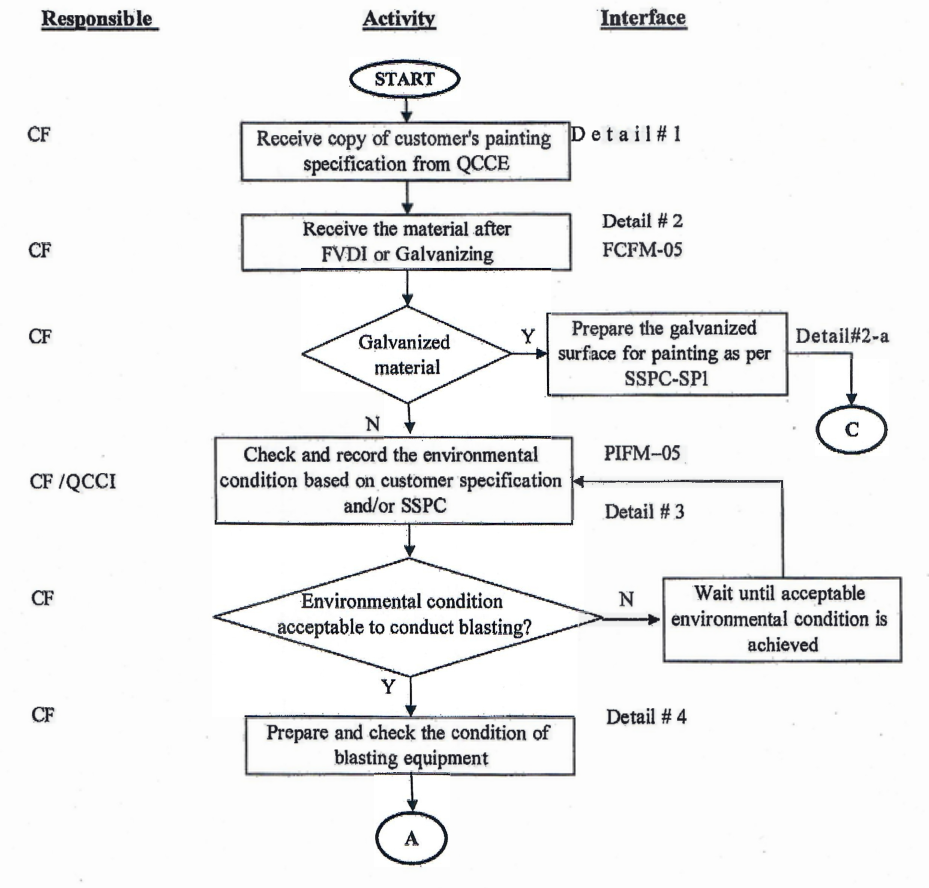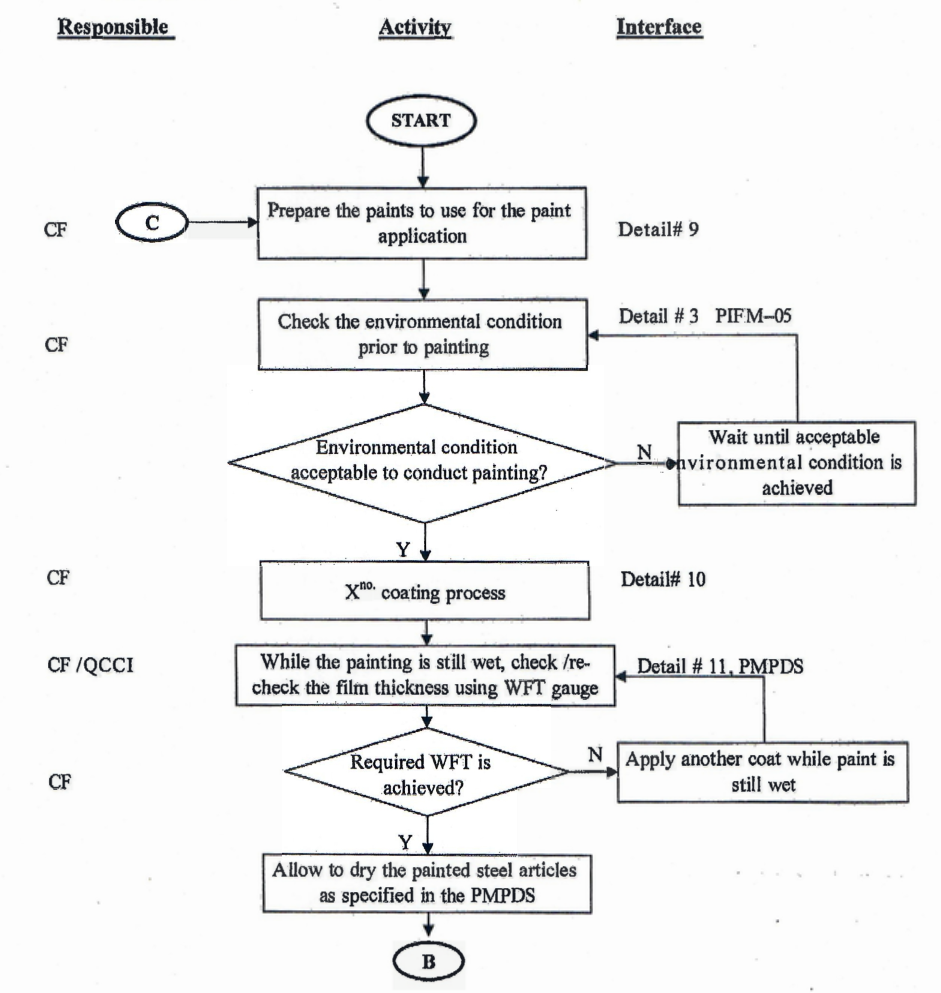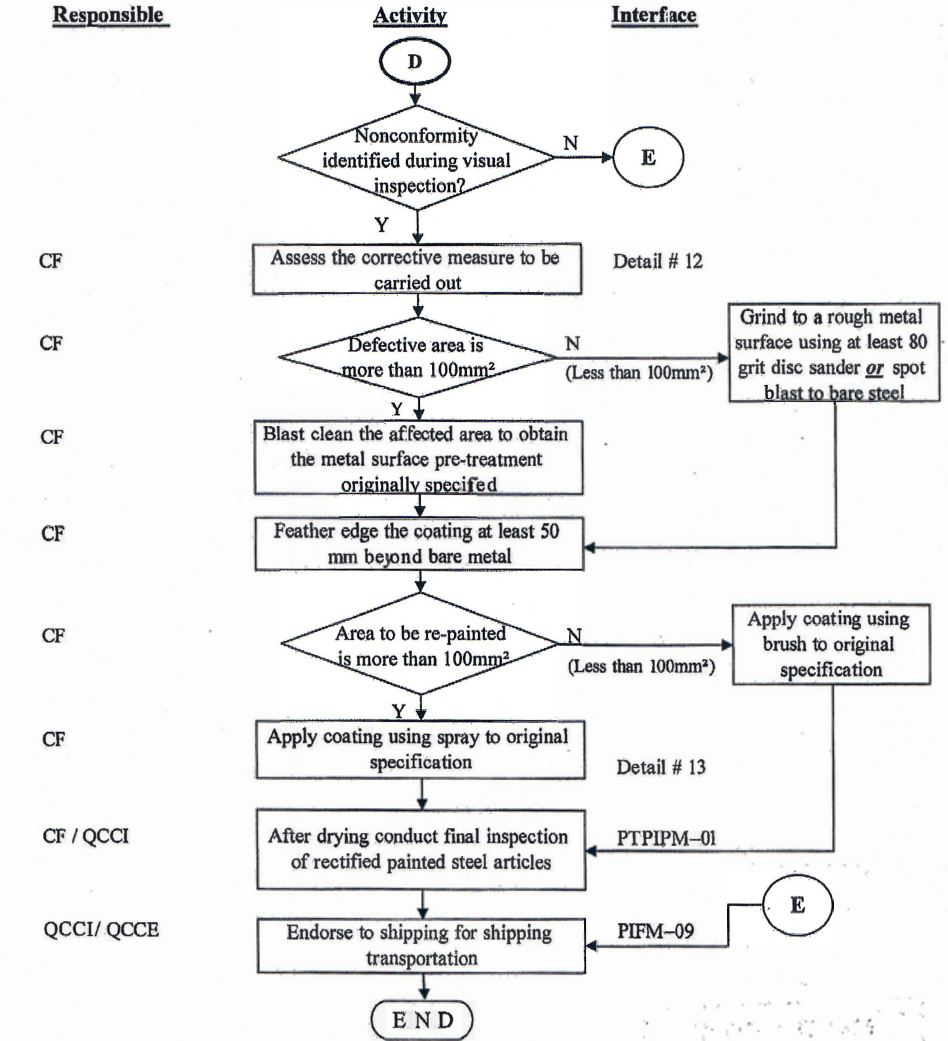To define the processes involved for blasting and painting of steel articles as defined by the ARAMCO Painting Specifications, Customer’s painting specifications; and applicable international painting codes and standards. This procedure aims to provide guidelines to those responsible in the involved processes.
Blasting, Painting and Rectification Procedure | Method Statement
SCOPE:
This procedure covers AK and Partners procedural process for surface preparation and painting as per applicable standards of Saudi Aramco, especially, 12-SAMSS-007, SAES-H-100, SAES-H-001, SAES-H-101 and customer’s project specification and applicable international standards, as stipulated in the contractual agreement and customer’s approved QITP.
3. DEFINITIONS AND ACRONYM:
AK&P – Company/vendor, responsible for ensuring all required inspections and tests, stipulated in the QITP and project specifications are carried out.
PROJECT SPECIFICATION/ CONTRACTUAL DOCUMENTS – Saudi AramcoStandard Specifications:
12-SAMSS-07: Fabrication of Structural and Miscellaneous Steel
SAES-H-100 : Coating Material Application requirements for Industrial facilities
SAES-H-101: Approved Protective Coating Systems
SAES-H-001: Selection Requirements for Industrial Coating
and other specific documented requirements of the customer, which could be in the form of contractual agreement, minutes of the meeting, minutes of pre-inspection meeting or correspondences.
SHOP DRAWING – Customer provided shop drawings or customer approved fabrication shop drawings with stamp of “released for construction”
QITP – Stands for Quality Inspection and Test Plan. A document prepared by AK&P and approved by the customer, which defines the inspection methodologies employed by AK&P and the customer. This document describes the manufacturing and inspection processes involved to realize the intended product, emphasizing the documentation and specifications required for the project. The importance of QITP is that, fabrication is not to start unless otherwise approved or authorized by the customer.
CF – Coating Foreman – (Coating Subcontractor)
DFT – Dry Film Thickness
FG – Finished Goods
PMPDS- Paint Manufacturer’s Product Data Sheet
PSIC -Paint Store In-Charge
QITP – Quality Inspection and Test Plan
QCCI – Quality Control Coating Inspector
QCCE – Quality Control Coating Engineer
RFI – Request for Inspection
SF – Shipping Foreman
SSPC – The Society for Protective Coatings
WFT – Wet Film Thickness
WPIC – Workshop-Production-In-Charge
4. PROCEDURAL PROCESS;
4.1 BLASTING
4.2 PAINTING
4.3 RECTIFICATION
5. PROCEDURAL DETAILS:
1. Saudi Aramco approved paint sub-contractor is the one doing all the painting requirements (surface preparation and paint application) of AK&P. Although a contractor does this process, their activities are monitored and controlled by our QC Inspectors and QC Coating Engineer to ensure project specifications are adhered to accordingly.
2. The material, welded or non-welded, which require painting after final visual dimensional inspection are handed over to painting section through final inspection report (form no. FCFM-05). Sometimes, if required by project specification, material after galvanizing is also handed over to painting section for painting.
2-a. For material requiring painting after galvanizing, abrasive sweep blast shall be performed and as per the minimum surface preparation recommended by paint manufacture. Refer to attachment -1.
3, Monitoring of environmental condition is done at least 4 times per working day at an interval of 2 hours. The following environmental conditions are determined: dry and wet bulb (air) temperature, relative humidity, dew point and steel temperature. Required relative humidity and steel surface temperature are normally provided in the customer specification. Otherwise, SSPC will be the basis. Generally, blasting shall only be carried out when the steel surface temperature is at-least 3°C above the dew point reading. This is recorded in PIFM-05, Blasting and Painting Environmental Condition Report.
4. Blasting equipment includes compressor, moisture separator, high nozzle air pressure, portable high production abrasive blast machines, large size blast hose with external coupling and large orifice venturi-nozzle. For any blasting to occur, the nozzle pressure shall not be less than 90 psi. During blasting process staff working in the blasting area are equipped with safety air-fed helmet, safety goggles, leather apron, safety shoes and safety gloves.
5. The type of abrasive used for surface preparation shall be garnet or shots and grits. Abrasives are stored in a dry condition under a covered shed. The requirements of SAES-H-100 clause 5.1 and 5.2 shall be adhered.
6. Prior to blasting process, all those that are not involved are asked to leave to protect them from extreme condition associated with the process. The system(s) to be used for this process shall be dependent with the customer’s specification, such as cleanliness level and blasting profile.
7. In accordance with SAES-H-100 clause 5.1.4; Profile checking is done on several areas of the steel articles of which one press-o-film is used for each area. Time shall be recorded on the press-o-film to indicate when the blasting was completed. The purpose of time recording is to allow monitoring that painting application has to occur within four hours after completion of blasting process. If painting cannot be done within 4 hours for some reason, the pieces shall be re-blasted.
8. If there is a majority if areas, which the required profile is not achieved, the steel article is completely re-blasted. However, the required profile is not achieved in small areas, this is only sweep-blasted.
9. Paint used for this project shall only be from Saudi Aramco approved paint manufacturers such as Oaisis Ameron, Hempel, Sigma Paints. Preparation of paint includes, ensuring the paint is not expired; project required color is used and batch number of the paint is verified. This also includes ensuring the paint is thoroughly mixed using a power mixer until sludge has formed at the bottom of the paint can and could not be dispersed, the paint will not be used.
Coating shall not be applied one or more of the following conditions exist unless the coating is specifically formulated for the averted condition:
a) The substrate temperature is less than 10 °C or more than the temperature limit given in the applicable Saudi Aramco Data Sheet.
b) The substrate contains oil, grease, dirt, loose coating, loose rust, or other surface contaminants.
c) The substrate temperature is less than 3°C (5°F) above the dew point.
d) Adverse weather conditions exist such as, but not restricted to, the following:
1) Wind is strong enough to blow sand, salt spray, or other foreign matter onto the surface being coated.
2) Wind is strong enough to cause dry spray or to otherwise seriously disturb the spray pattern when application is by spray gun.
10. Generally, there are three coating process applications, which are dependent with the customer’s painting specification and/ or contractual agreement. The painting system to be used for this process shall be dependent with the customer’s specification. The three coating system are primer (first coating), intermediate (second coating) and final (third coating). In multi-coat applications, primer, intermediate coat, and topcoats shall be of contrasting colors and from the same coating manufacturer. There are times though that there will be two coating during primer to achieve the required DFT specification.
11. Required WFT for a specific required DFT is provided in the PMPDS.
12. If the defective area has presence of grease or oil, this needs to be cleaned with solvent or detergent wash prior to blasting.
13. If the defective area has multi coating system, ensure that the first coat is thinned by 15%.
6. REFERENCED DOCUMENTS:
FCFM-O5 — Request for Inspection (Prior to Shipment)
PIFM-O5– Blasting and Painting Environmental Condition Report
PIFM-08 — Final Inspection report — Blasting and Painting
PIFM-O9– Final Inspection Report (Galvanizing/ Painting)
PLFM-01 – Quality Inspection and Test Plan
PTPIPM-O1 — Final Inspection of Painted Steel Articles Procedure
SSPC vol 1 &2 -The Society for Protective Coatings
12-SAMSS-07 – Fabrication of Structural and Miscellaneous Steel
SAES-H-100 – Coating Material Application requirements for Industrial facilities
SAES-H-101 – Approved Protective Coating Systems
& SAES-H-001 – Selection Requirements for Industrial Coating



